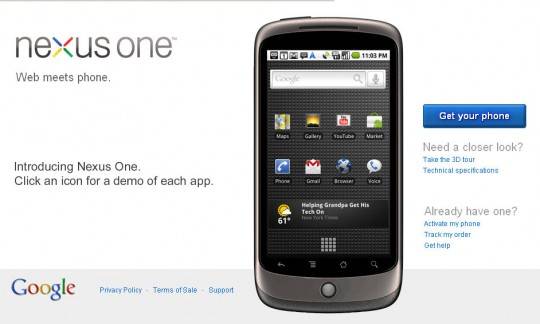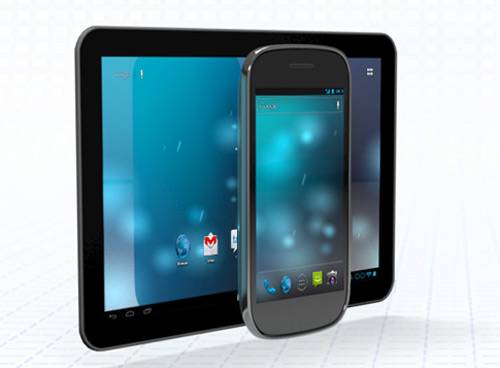
The biggest news in the Android world last week wasn’t yet another faked Galaxy S III photo, or Apple’s latest legal shenanigans. It was Google’s return to a model that we’d all thought they had abandoned almost two years ago. Not only did the Big G start selling the Galaxy Nexus directly to consumers, it did so at a severely reduced and probably subsidized price: $399 for a no-contract, unlocked GSM superphone. And unlike Verizon’s version (which still goes for $650 without a contract), it’s getting the latest Android updates as they come out.
This is a return to the model that Google tried and failed with the original Nexus One, which it sold from a wholly different internet marketplace way back in January of 2010. While the Nexus One was a successful device, Google’s attempt to sell phones directly to American consumers without a carrier intermediary crashed and burned – plans to bring the Nexus One to Verizon fell through in favor of the HTC DROID Incredible, a nearly identical device from a hardware perspective that was nonetheless burdened by manufacturer and carrier additions.
So what’s different this time around? Well for one, Google doesn’t need the smartphone hardware portion of its Google Play Store to be a success. Android is sitting pretty with 50% of the smartphone market. To be blunt, the sales that Google will make on smartphones, even with a great phone at a great price, are insignificant. You might see different phones like the Nexus S popping in, and perhaps the WiFi version of the original XOOM, but these are sideshows. Google isn’t looking to set the world on fire with direct to consumer sales (which are commonplace everywhere except North America) – they want to draw a line in the sand for Android. They’re saying that this is the pure Google experience. This is the best that Android can be, and these devices will be updated for years after you buy them… unlike certain Nexus devices we could name.

But smartphones aren’t the real target here. If we assume that the many, many rumors of Google producing a first-party tablet are true (and at this point even yours truly the skeptic thinks there’s at least something there) then the distribution model can only be the Google Play Store. And with competitors like Amazon and Barnes & Noble creating modified versions of Android to fit their own needs, Android is in danger of becoming dangerously decentralized – at least on the tablet front. If the rumors of a $200 Ice Cream Sandwich tablet are true, from ASUS or anyone else, it would finally make the case that Android on tablets is a viable alternative to the more expensive iPad and the bottom-rung “reader” tablets.
And make no mistake, there’s a need for expansion in the Android tablet space. Powerful, expensive models just aren’t selling like their Cupertino counterparts. Even Samsung, which usually prices its wares well above other Android manufacturers, is reaching lower with a $250 Galaxy Tab 2 7.0. We’re as eager as you to see Google strike back with a second “developer” tablet, especially considering the leaps and bounds that Ice Cream Sandwich has made. If Google can pull of a device that matches the reader tablets on price and beats them with true tablet software (even if the hardware is only so-so for this generation) they’ll have an undeniable advantage against every Android manufacturer, and – for the first time – a real shot at Apple in the tablet space.

And therein lies the problem. Google can sell smartphones and tablets at a loss all day long, and justify it because it will get them more users and more market share. Samsung, HTC and Motorola can’t do that – their margins are razor-thin to begin with, or in the case of Motorola, practically non-existent. When and if Google comes out with a “pure” Android tablet at an unbeatable price, what motivation do major manufacturers have to meet it? If they can’t make (or more accurately, sell) tablets cheaper than Google itself can, what reason do they have to even try with more expensive models? 3G and 4G tablets aren’t selling nearly as much as their WiFi counterparts, so if Google corners the market on its own operating system with a WiFi model, the manufacturers will only retreat even further into the arms of expensive carrier-subsidized mobile broadband hardware – where Apple holds a deathgrip thanks to their plan pricing.
Selling hardware is a tricky situation for Google: if they expand into tablets they’re between a rock and a hard place. Success means broadening Android’s prospects, but alienating manufacturers who are already all to eager to customize the software beyond recognition. Failure means capitulating to the iPad and leaving Android’s tablet future in the hands of those who have no real interest in the health of the platform. How will Google handle this dichotomy? We should see next month, when the Nexus Tablet is thought to be unveiled at Google IO.










Google should just secretly invest more in Motorola hardware division to make their own branded tablets/ phones w great innovation. Otherwise their reliance on Samsung will come back and bite them in the ass someday because Samsung and other manufacturers will jump ship as soon as they see the profits.
really amazing !!..I can t believe that people can easily spy on anyone’s cell phone(spouse,children,employees) simply using this website.have you seen this website before .For More Info => SPY4YOU
like Randall responded I’m startled that a mother able to profit $6482 in four weeks on the computer. did you look at this webpage LázÿCásh5.Çom
just as Janet implied I’m surprised that any body able to get paid $5120 in 4 weeks on the computer. did you read this web page LâzýÇãsh5.Çom